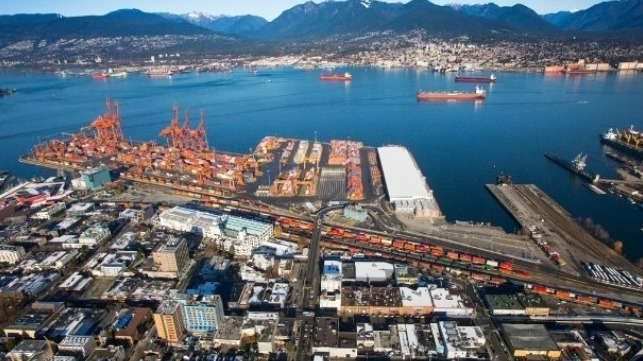
As part of its economic recovery and to lay the foundation for future growth, the government of Canada announced two projects designed to enhance its industrial ports. Canada’s Transport Minister, Omar Alghabra, announced the projects saying that Canada is investing in its economy by making improvements to its trade and transportation corridors.
The investments in the ports will include Vancouver, Canada’s busiest port and a key gateway for Asian trade and on the east coast the Saguenay Port, which serves the industrial region of Saguenay-Lac-St-Jean at the head of the Saguenay fjord. Other investments are planned in airports and the Canadian rail system.
As Canada’s largest port, the port of Vancouver provides a strategic gateway for the country’s imports and exports, handling a third of Canada’s trade in goods transiting outside North America. Last year, overall cargo throughput at the port remained largely flat due to COVID-19 disruptions, which resulted in just a one percent increase to 145.5 million metric tons and two percent growth of 3.5 million TEUs in the container trade. The port however annual accounts for almost C$240 billion in goods and more than 2,700 foreign vessel calls.
The Minister announced plans to improve marine vessel traffic flow at the Port of Vancouver and in Southern British Columbia. With the support of Transport Canada, the Vancouver Fraser Port Authority will work with partners to design a new collaborative system to manage marine vessel traffic and optimize the supply chain flow for this strategic gateway. To be completed by March 31, 2022, the new plan includes approaches to policies, procedures, practices, incentives, technologies, information, and data sharing needed to deliver a traffic management system that creates benefits for all partners.
Earlier this summer the port experienced an unprecedented container backlog after devastating wildfires disrupted rail transport. Investment in the new system comes at a time when the Port of Vancouver is investing more than C$1 billion in infrastructure projects, including two container terminal projects and several road and rail projects to enhance its long-term competitive position and prepare it to handle growth as well as manage future issues such as those experienced this summer.
Once implemented, the system is expected to strengthen maritime safety by reducing congestion and actively managing traffic to improve the efficiency and reliability of the flow of goods for importers and exporters.
Minister Alghabra also announced an investment of over C$33 million for the Saguenay Port. A regional port, it is an import business for the local industry. The deep-water port is capable of handling vessels up to 100,000 dwt and is ice-free remaining open year-round.
The project targets the installation of an electric mechanized transport system to transport materials at the Saguenay Port site. The conveyor system will be used to move materials back and forth between the industrial port zone and ships docked at the Grande- Anse Marine Terminal. Additionally, the system will also be accessible for loading and unloading of materials for port users who may build processing plants on the Saguenay Port property.
The funding will be done through the National Trade Corridors Fund, a merit-based program providing funding for investment in critical infrastructure assets in Quebec and across Canada. This project funding aims to enhance the performance and functions of facilities at the port, helping increase handling capacity and reduce bottlenecks in daily operations.
In announcing the two projects, the minister noted that the quality of Canada’s transportation infrastructure and the efficiency of its trade corridors are key to the success of companies in the global marketplace. As such, the Government of Canada continues to invest in infrastructure projects that create quality middle-class jobs and support economic growth.
SOURCE READ THE FULL ARTICLE
https://www.maritime-executive.com/article/canada-s-transport-minister-announces-ports-investments